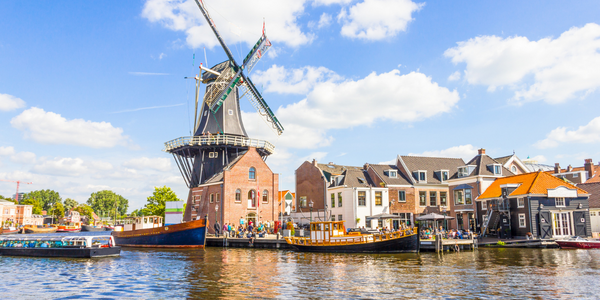公司规模
Large Corporate
地区
- America
国家
- United States
产品
- FleetFocus
- FuelFocus
技术栈
- Automated Fuel System (AFS)
- Proximity Key technology
- Radio Frequency (RF) vehicle units
实施规模
- Enterprise-wide Deployment
影响指标
- Cost Savings
- Productivity Improvements
- Waste Reduction
技术
- 功能应用 - 车队管理系统 (FMS)
- 功能应用 - 远程监控系统
适用行业
- 城市与自治市
适用功能
- 物流运输
- 维护
用例
- 车队管理
- 车辆性能监测
服务
- 系统集成
- 软件设计与工程服务
关于客户
Gwinnett County, located just thirty miles northeast of Atlanta, Georgia, is home to over 750,000 residents and has been one of America’s fastest-growing counties for the past twenty years. The county is ideally located for residents who wish to enjoy the city life without missing out on the scenic beauty of rural Georgia, including the recreational haven Lake Lanier. The Gwinnett County Fleet Management Division is an internal service organization that is solely responsible for providing the most efficient and cost-effective support, maintenance, and operation of all Gwinnett County vehicles, associated equipment, and fueling sites. The fleet management department owns and maintains over 2,700 vehicles utilized for road maintenance, parks and public services, police protection and other government business. In addition to the vehicles and equipment in Gwinnett County’s fleet, Gwinnett County provides fuel for over 5,500 vehicles including the Board of Education, the Health Department, Gwinnett Medical Center, the Gwinnett Library System and the cities located inside Gwinnett County.
挑战
Gwinnett County, Georgia, is home to over 750,000 residents and has been one of America’s fastest-growing counties for the past twenty years. The Gwinnett County Fleet Management Division is responsible for providing the most efficient and cost-effective support, maintenance, and operation of all Gwinnett County vehicles, associated equipment, and fueling sites. The fleet management department owns and maintains over 2,700 vehicles utilized for road maintenance, parks and public services, police protection and other government business. In addition to the vehicles and equipment in Gwinnett County’s fleet, Gwinnett County provides fuel for over 5,500 vehicles including the Board of Education, the Health Department, Gwinnett Medical Center, the Gwinnett Library System and the cities located inside Gwinnett County. The challenge was to manage these vehicles and fuel consumption in an efficient and cost-effective manner.
解决方案
Gwinnett Fleet Management Division has depended on AssetWorks’ FleetFocus fleet management software for over thirteen years. In recent years the county has upgraded to the browser-based version of FleetFocus and implemented AssetWorks’ fully integrated automated fuel management system, FuelFocus. FleetFocus and FuelFocus allow Gwinnett County fleet managers, supervisors and technicians to access all their fleet and fuel information on a single database and provides them with valuable tools to help with service requests, work order management, shop scheduling, utilization, and inventory management. FleetFocus provides real-time labor capture recording actual time spent on a task as it is done. Indirect labor or general time that cannot be billed to a specific work order is also measured in real-time, allowing for true analysis of ‘wrench’ vs ‘non-wrench’ time. The county relies on AssetWorks’ FuelFocus to manage all fuel transactions county-wide. FuelFocus is an Automated Fuel System (AFS) which supports continuous, real-time fuel management over virtually any communication platform and integrates seamlessly with the county’s FleetFocus software application in real-time.
运营影响
数量效益

Case Study missing?
Start adding your own!
Register with your work email and create a new case study profile for your business.
相关案例.

Case Study
Turning A Stadium Into A Smart Building
Honeywell created what it called the “intelligent system” for the National Stadium in Beijing, China, turning the venue for the opening and closing events at the 2008 Summer Olympics into a “smart building.” Designed by highly controversial artist Ai Weiwei, the “Bird’s Nest” remains one of the most impressive feats of stadium architecture in the world. The 250,000 square meter structure housed more than 100,000 athletes and spectators at a time. To accommodate such capacity, China turned to Honeywell’s EBI Integrated Building Management System to create an integrated “intelligent system” for improved building security, safety and energy efficiency.
.png)
Case Study
Smart Street Light Network (Copenhagen)
Key stakeholders are taking a comprehensive approach to rethinking smart city innovation. City leaders have collaborated through partnerships involving government, research institutions and solution providers. The Copenhagen Solutions Lab is one of the leading organizations at the forefront of this movement. By bringing together manufacturers with municipal buyers, the Copenhagen Solutions Lab has catalyzed the development and deployment of next-generation smart city innovations. Copenhagen is leveraging this unique approach to accelerate the implementation of smart city solutions. One of the primary focus areas is LED street lighting.

Case Study
Buoy Status Monitoring with LoRa
The Netherlands are well-known for their inland waterways, canals, sluices and of course port activities. The Dutch Ministry of Infrastructure indicates that there are thousands of buoys and fixed items in and near water environments that would profit from IoT monitoring. One of the problems with buoys for example, is that they get hit by ships and the anchor cable breaks. Without connectivity, it takes quite some time to find out that something has happened with that buoy. Not to mention the costs of renting a boat to go to the buoy to fix it. Another important issue, is that there is no real-time monitoring of the buoys at this moment. Only by physically visiting the object on the water, one gains insight in its status.

Case Study
Barcelona Case Study
Barcelona’s heavy traffic and its associated high levels of pollution were the primary factors that motivated some companies and universities to work on strategies for improving traffic in the city centre. Bitcarrier is one of the technologies involved in the In4Mo Project, whose main objective is to develop the applications that form the core of smart mobility, one of the fundamental pillars of the smart city concept.

Case Study
China Mobile Smart Parking
Smart Parking, powered by NB-IoT technology, is making it easier for drivers to find free parking spots. Cities can better manage their parking assets and maximize the revenue available to them as a result. Drivers searching for parking create congestion and pollution by circling and hunting for available parking. Smart Parking services are able to significantly ease these problems by guiding a driver directly to a parking space.








